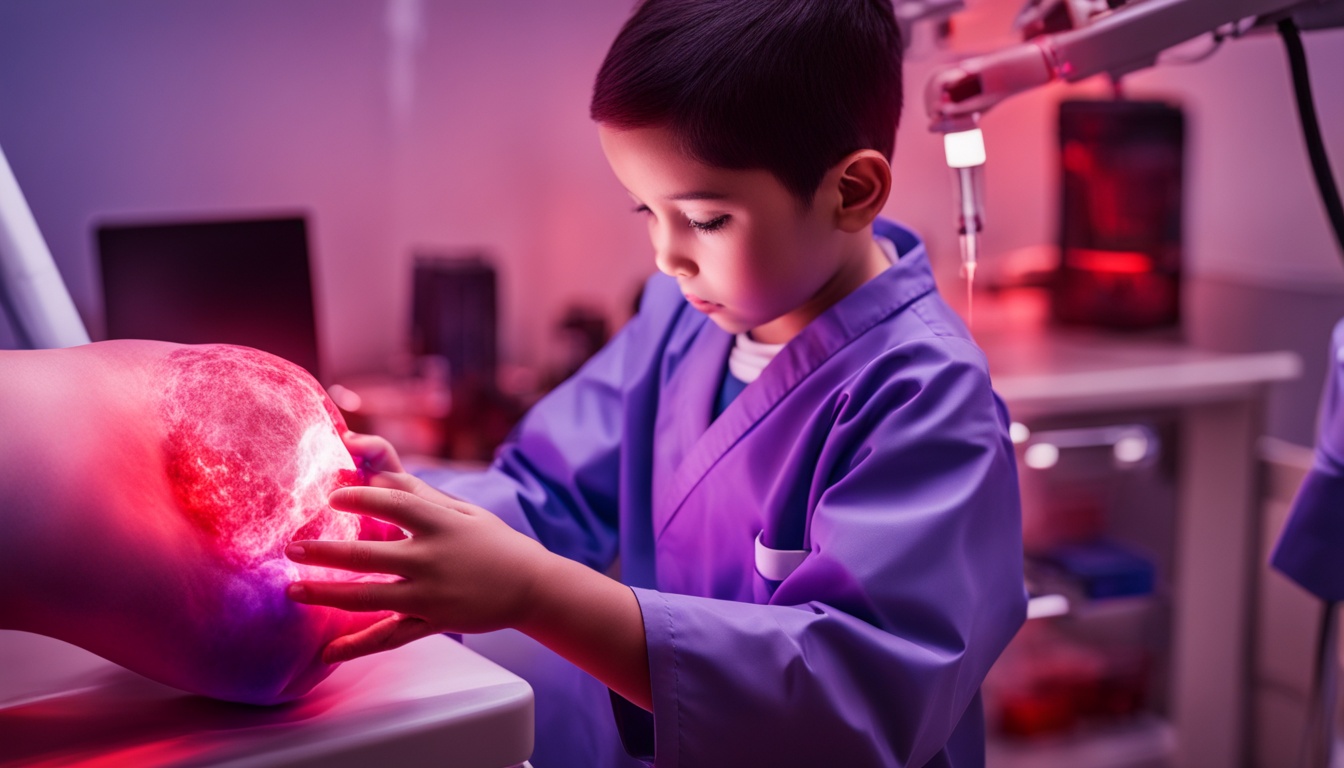Rhabdomyosarcoma is a rare childhood cancer that affects soft tissues. This includes muscles, fat, and blood vessels. It makes up about 6% of all pediatric cancers. Even though we don’t know the exact cause, certain genetic factors, like Li Fraumeni syndrome, play a role.
Children with this cancer may show different symptoms based on the tumor’s location. They might have a lump or swelling where the tumor is. They could also feel pain, discomfort, and have trouble moving. Quick diagnosis is key to successful treatment.
The first steps to diagnose rhabdomyosarcoma include imaging tests. These include X-rays, ultrasound, CT scans, and MRI. Doctors use these tests to see and understand the tumor better. Then, a biopsy is done to check a piece of the tumor in the lab. This helps confirm the diagnosis and find out the subtype. Sometimes, genetic tests are done too, to learn more about the disease.
Treating rhabdomyosarcoma involves options like surgery, chemotherapy, and radiation therapy. Stem cell therapy might also be used in some cases. The best treatment plan depends on several factors. These include the tumor’s stage, where it is, and how the patient reacts to the first treatment. Thanks to ongoing research, the outlook for patients with this cancer is improving.
Key Takeaways:
- Rhabdomyosarcoma is a rare childhood cancer that affects the soft tissues of the body.
- Genetic factors, such as Li Fraumeni syndrome, can increase the risk of developing rhabdomyosarcoma.
- Symptoms of rhabdomyosarcoma can include a lump or swelling, pain, discomfort, and limited mobility.
- Diagnosis involves imaging tests, biopsies, and genetic testing.
- Treatment options include surgery, chemotherapy, radiation therapy, and stem cell therapy.
Symptoms and Diagnosis of Rhabdomyosarcoma
Rhabdomyosarcoma is a rare cancer that mostly affects kids. Its symptoms vary depending on where the tumor is. Finding these signs early is key to quick treatment. Most kids show symptoms like:
- A noticeable mass or swelling in the affected area
- Pain and discomfort
- Limited mobility
- Localized or systemic symptoms based on tumor location
To be sure someone has rhabdomyosarcoma, doctors need to do a lot of tests. They start with imaging tests to see the tumor’s details and if it has spread. X-rays, ultrasounds, CT scans, and MRIs are common. These tests help doctors see the size and location of the tumor.
After imaging tests, biopsies are done next. A biopsy means taking out a small piece of the tumor to study it. This test confirms if it’s rhabdomyosarcoma and which type. Sometimes, genetic tests are done too. They look for any gene issues linked to this cancer.
By doing imaging, biopsies, and genetic tests, doctors get a clear view of the cancer. And, they can choose the best way to treat it.
Rhabdomyosarcoma Diagnostic Process
| Diagnostic Method | Purpose |
|---|---|
| Imaging Tests | Visualize tumor characteristics and determine size, location, and spread |
| Biopsies | Obtain tissue sample for pathological examination |
| Genetic Testing | Identify genetic factors contributing to rhabdomyosarcoma development |
Treatment Options and Prognosis for Rhabdomyosarcoma
Rhabdomyosarcoma is treated through multiple ways. This can include surgeries, chemo, radiation, and perhaps stem cell therapy. What a patient gets depends on tumor stage, where it is, the specific type of rhabdomyosarcoma, how the first treatments worked, and the patient’s general health.
During surgery, doctors try to cut out as much of the tumor and around it as possible. Chemo and radiation then fight any unseen cells. These treatments aim to stop the cancer from coming back. Stem cell therapy might help fix the bone marrow in some cases, especially if the disease has come back.
The chances of beating rhabdomyosarcoma are different for each person. It depends on several things, like the cancer’s stage and type, where it is, and how well the treatments work. On average, 7 out of 10 kids with rhabdomyosarcoma will live five years or more after their diagnosis. Thanks to new treatments and more research, these numbers are getting better.

